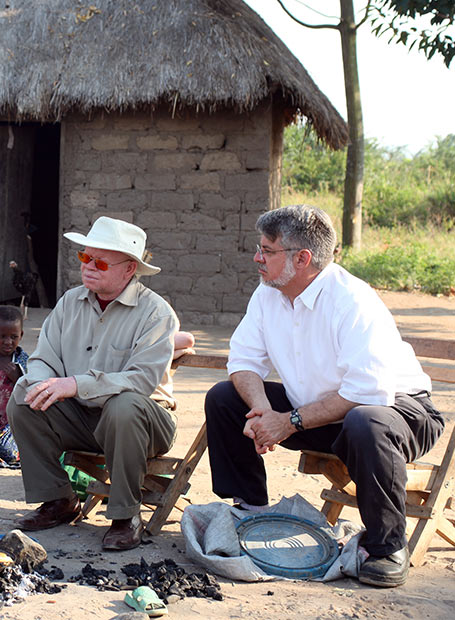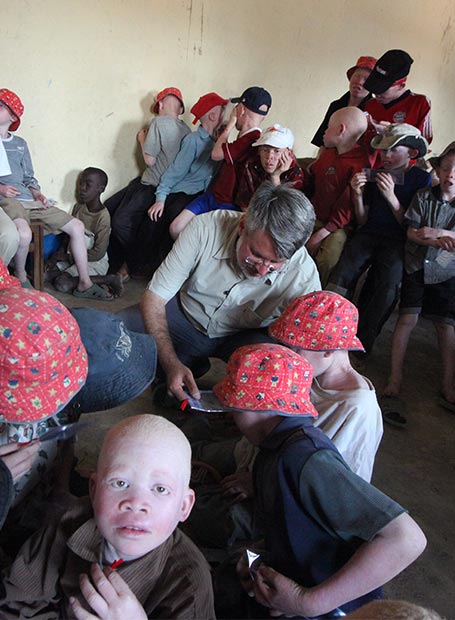Dr Murray Brilliant,
Geneticist on Human Albinism
Dr Murray Brilliant is a world renowned researcher on the genetics of human albinism and Director of the Centre for Human Genetics of Marshfield Clinic, Wisconsin, United States. He recently completed a research project on people with albinism in Tanzania that was covered on an international TV network.
Meet Dr Murray Brilliant

Trigger
My work in albinism started with a project aimed at understanding why mice come in different colors. I began working with a cream-colored mouse variant first described over 100 years ago. I designed a novel method that led to the identification of the gene that was associated with the cream color and discovered that it was also associated with the most common form of albinism in people (oculocutaneous albinism type 2, OCA2). Subsequent work led to the identification of two more genes associated with albinism (OCA4 and HPS1, associated to the Hermansky-Pudlak Syndrom).
Although I had known people with albinism since I was in high school, my laboratory work and my interaction with them have led to a deeper understanding of the issues that people with albinism face every day. This includes limitations in vision, susceptibility to skin cancer and social stigma. I have worked to try to understand the role of the various genes involved in albinism. This has led to two clinical trials with two different drugs aimed at improving vision.
Field Work
My work studying albinism has taken me all over the world. In addition to the United States and Europe, I have worked with populations with high albinism around the world: the Kuna people in Panama; the Minahasa people of Sulawesi, Indonesia; and the Bantu language speaking peoples in Tanzania. I have learned much from people with albinism who work very hard to overcome their limitations in vision and social stigma.


Attacks
Unfortunately, people with albinism face extreme peril from others in certain parts of the world. This is especially true in East Africa, where superstition holds that their bones, hair and other body parts can be used magically. In the past, this was largely limited to grave robbing, but living people are increasingly targeted now. Sadly, many people with albinism in East Africa are murdered for these body parts. I have a deep respect and understanding for rituals, beliefs and traditions that are not my own. However, the murder and maiming of innocent people can never be justified.
The Truth
Albinism is not rare in Tanzania. Indeed, about 1 in 1,400 Tanzanians has albinism. Nearly all of the albinism in Tanzania is OCA2 and most Tanzanian people with the condition have a mutation that we can trace back to a common ancestor, who lived about 2,500 years ago. This mutation is carried by nearly 1 in 19 Tanzanians. Ironically, it is highly likely that it is also carried by at least a few of the murderers of people with albinism. Albinism is therefore a trait of the ancestors of the Tanzanian people. Perhaps if the people of Tanzania knew that people with albinism are a manifestation of one of their ancestors, the murders would stop.

